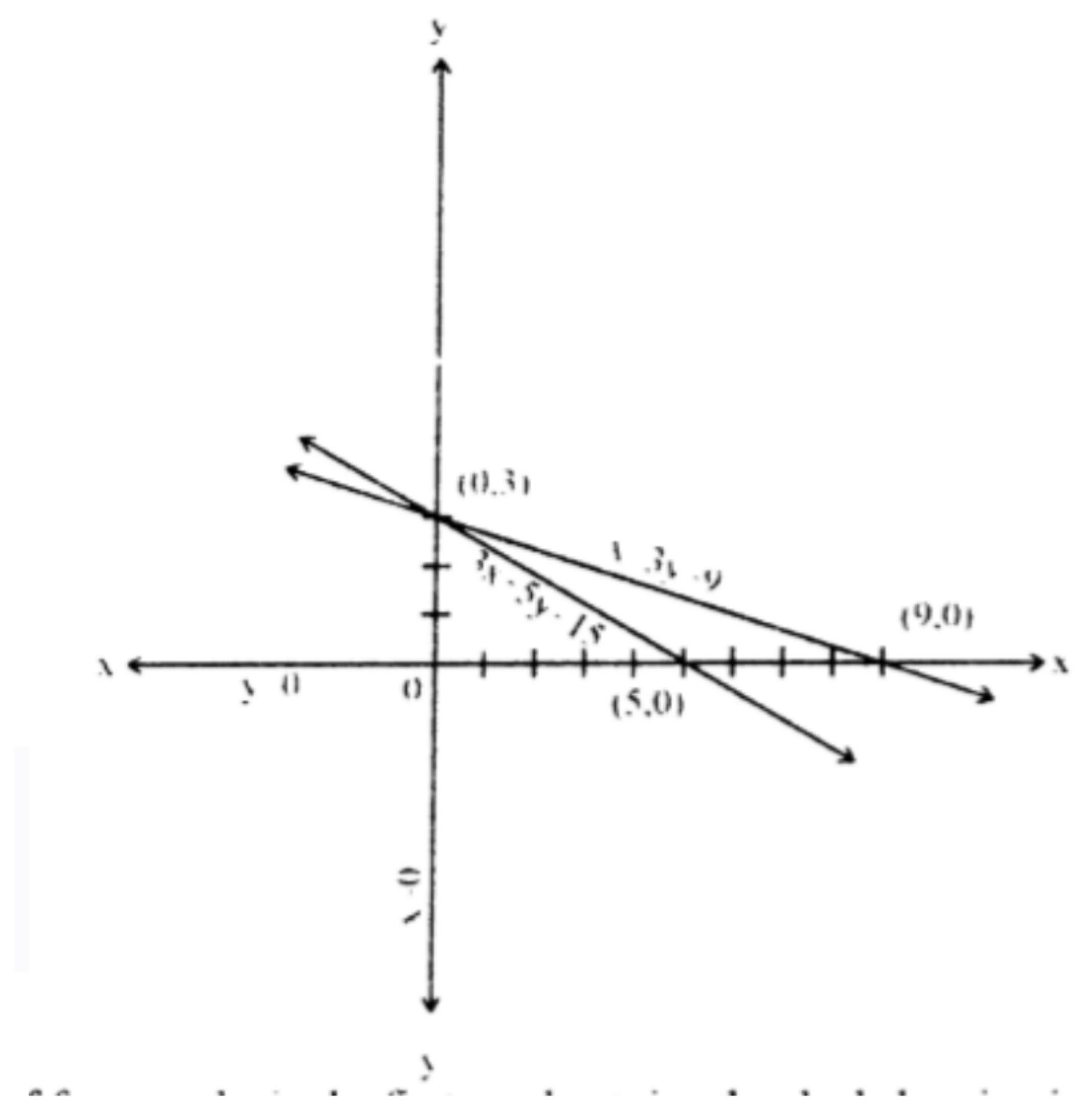5.3 Q-6
Question Statement
Maximize the objective function:
Subject to the following constraints:
Background and Explanation
This problem involves linear programming where we maximize an objective function subject to constraints. The solution involves:
- Graphing the constraints to find the feasible region.
- Identifying the corner points of the feasible region.
- Evaluating the objective function at these points to find the optimal solution.
Solution
-
Graph the constraints:
-
Constraint 1:
Rewrite as .- Set : . Point: .
- Set : . Point: .
-
Constraint 2:
Rewrite as .- Set : . Point: .
- Set : . Point: .
-
Check the origin (0,0) in both inequalities:
- For , we get , which is false.
- For , we get , which is true.
The feasible region is bounded by the points , , and .
-
-
Graph of the constraints:

-
Corner Points: The corner points of the feasible region are:
, , and . -
Evaluate the objective function at each corner point:
-
At :
-
At :
-
At :
-
-
Conclusion: The maximum value of is 27, which occurs at the point .
Key Formulas or Methods Used
- Linear Programming: Maximize or minimize a linear objective function subject to linear constraints.
- Feasible Region: The region of the graph where all constraints are satisfied.
- Corner Point Theorem: The optimal value of a linear programming problem occurs at one of the corner points of the feasible region.
Summary of Steps
- Rewrite the constraints as equalities.
- Solve for the intersection points of the constraints.
- Plot the feasible region on the graph.
- Identify the corner points of the feasible region.
- Evaluate the objective function at each corner point.
- Determine the maximum or minimum value of the objective function.

